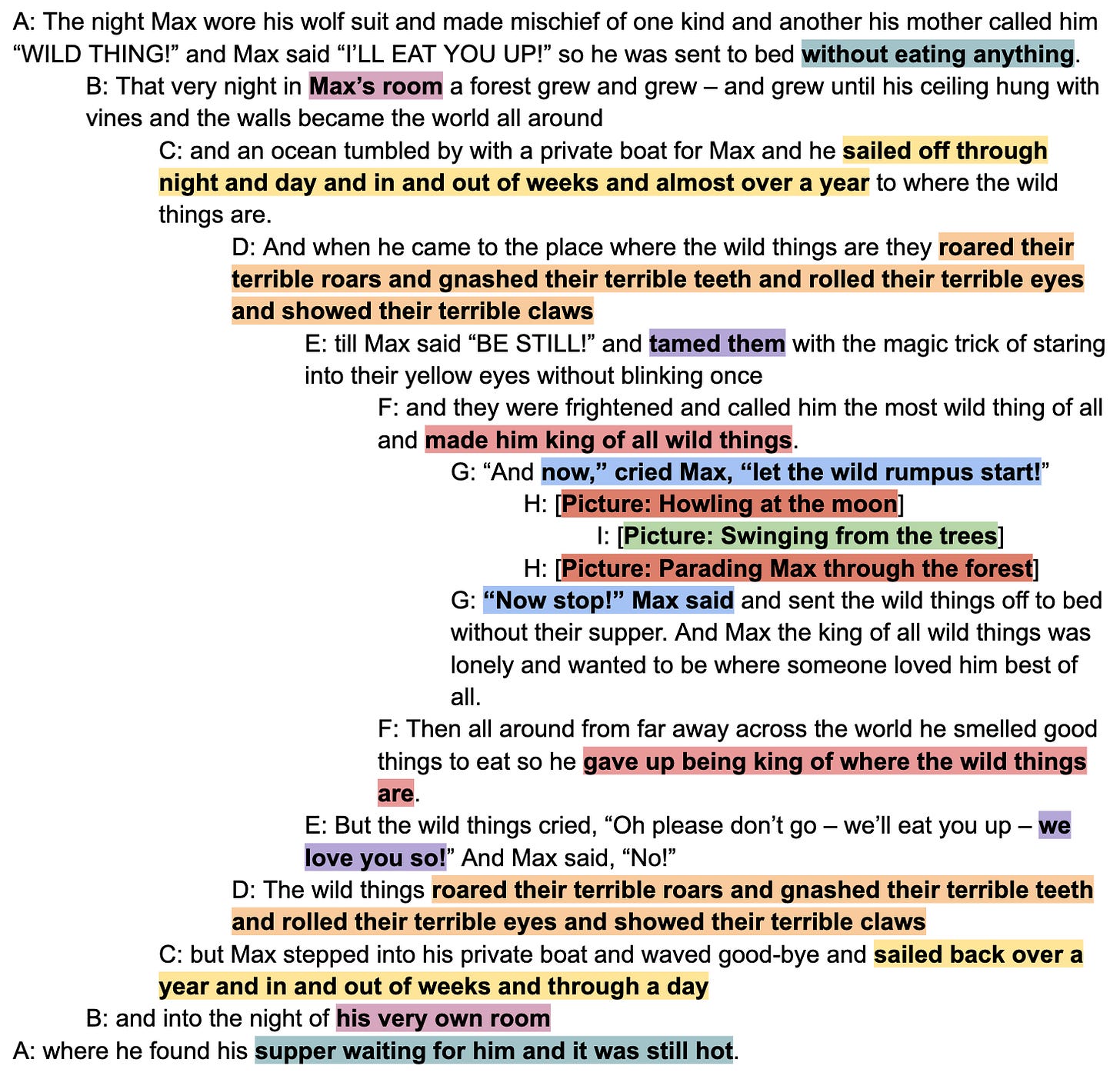Chiasmus in Maurice Sendak’s “Where the Wild Things Are”
Where the Wild Things Are by Maurice Sendak was published in 1963 and won the 1964 Caldecott Medal for the Most Distinguished Picture Book of the Year. It is one of the most famous and beloved children’s books of all time.
The book is structured as one lengthy chiasm.
The center of the chiasm is three pictures of the “wild rumpus,” showing the wild things howling at the moon, swinging from trees, and parading Max through the forest.
Interestingly, the second C element ( year > weeks > day) is a reversal of the first (day > weeks > year).
The chiastic structure of the story reinforces the interpretation of the story. According to book publisher Harper Collins:
Mary Pols of Time magazine wrote that "what makes Sendak's book so compelling is its grounding effect: Max has a tantrum and in a flight of fancy visits his wild side, but he is pulled back by a belief in parental love to a supper 'still hot."


![Where the Wild Things are [Book] Where the Wild Things are [Book]](https://substackcdn.com/image/fetch/$s_!Pik6!,w_1456,c_limit,f_auto,q_auto:good,fl_progressive:steep/https%3A%2F%2Fsubstack-post-media.s3.amazonaws.com%2Fpublic%2Fimages%2Fdfa25c29-8b74-4bb8-a305-918d3417f305_713x648.jpeg)
